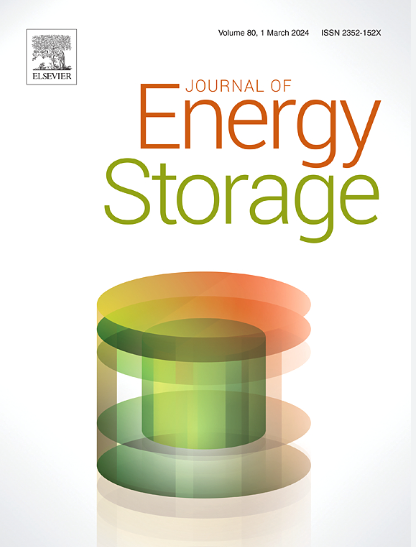Numerical investigation of melting of PCM in a square cavity with various sequential arrangements of hot and cold surfaces
IF 8.9
2区 工程技术
Q1 ENERGY & FUELS
引用次数: 0
Abstract
Thermal performance enhancement of latent energy storages and phase change material (PCM) based thermal control devices has been a challenging endeavor owing to the limitations imposed by material properties, confinement geometry, thermal convection physics, and poor thermal performance towards the end phase of the melting. Present study focuses on the melt front evolution and resulting thermal performance comparison of a two-dimensional square cavity latent energy storage with different sequential arrangements of cold and hot bounding surfaces. Here, each lateral surface is divided into two sections, designating them as hot surfaces and cold surfaces, a total of 216 different sequential arrangements have been examined. The novelty of the present investigation is that the thermal performance of all the possible positions of four thermally active walls in a latent heat storage system, undergoing simultaneous charging and discharging, have been critically examined. Boundary temperature, total area of the hot surface, cold surface, and the adiabatic wall are kept identical. Numerical simulations are performed with an enthalpy porosity technique based finite element solver. A clear elucidation of the melt dynamics is presented by tracking the unsteady melt front, portraying liquid fraction profiles, and estimating boundary heat transfer. The investigation revealed that the test cases with hot and cold surfaces placed alternatively on the lower half of the square cavity yielded higher heat accumulation. Moreover, when the cold surfaces were placed at the horizontal top wall with hot surfaces positioned at the right bottom and left bottom of the square cavity, the system exhibited superior melt fraction development during the final phases of melting. Buoyancy driven Rayleigh Benard convection current favouring the generation of higher thermal gradient at the heat transferring surfaces is observed for the aforementioned typical sequential arrangements of cold and hot bounding surfaces. These promising results are having potential applications in the design and development of high-performance systems involving simultaneous latent energy storage and recovery processes such as renewable energy storages, electronic cooling packages employing phase change materials, etc.

求助全文
约1分钟内获得全文
求助全文
来源期刊

Journal of energy storage
Energy-Renewable Energy, Sustainability and the Environment
CiteScore
11.80
自引率
24.50%
发文量
2262
审稿时长
69 days
期刊介绍:
Journal of energy storage focusses on all aspects of energy storage, in particular systems integration, electric grid integration, modelling and analysis, novel energy storage technologies, sizing and management strategies, business models for operation of storage systems and energy storage developments worldwide.
 求助内容:
求助内容: 应助结果提醒方式:
应助结果提醒方式:


